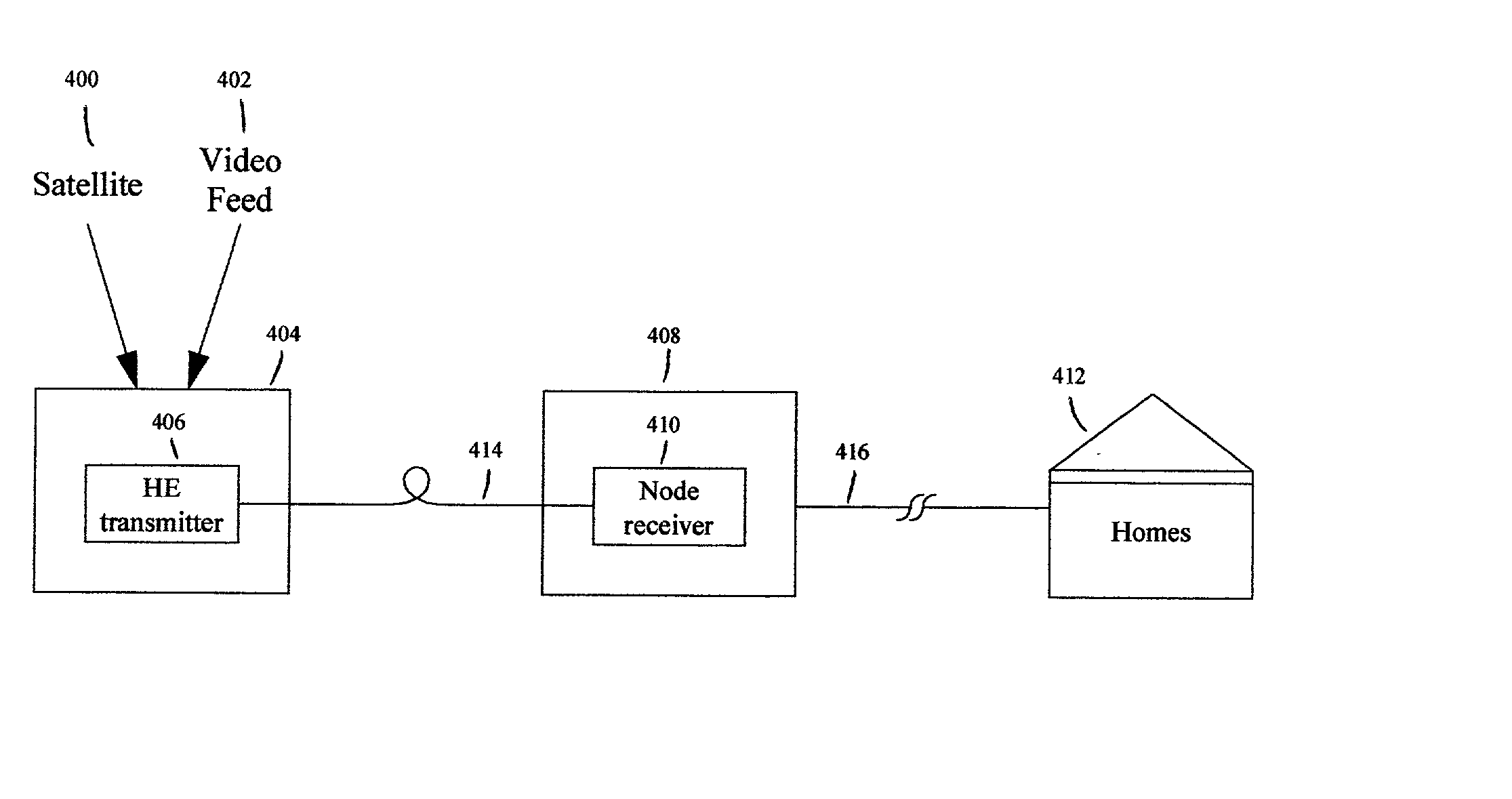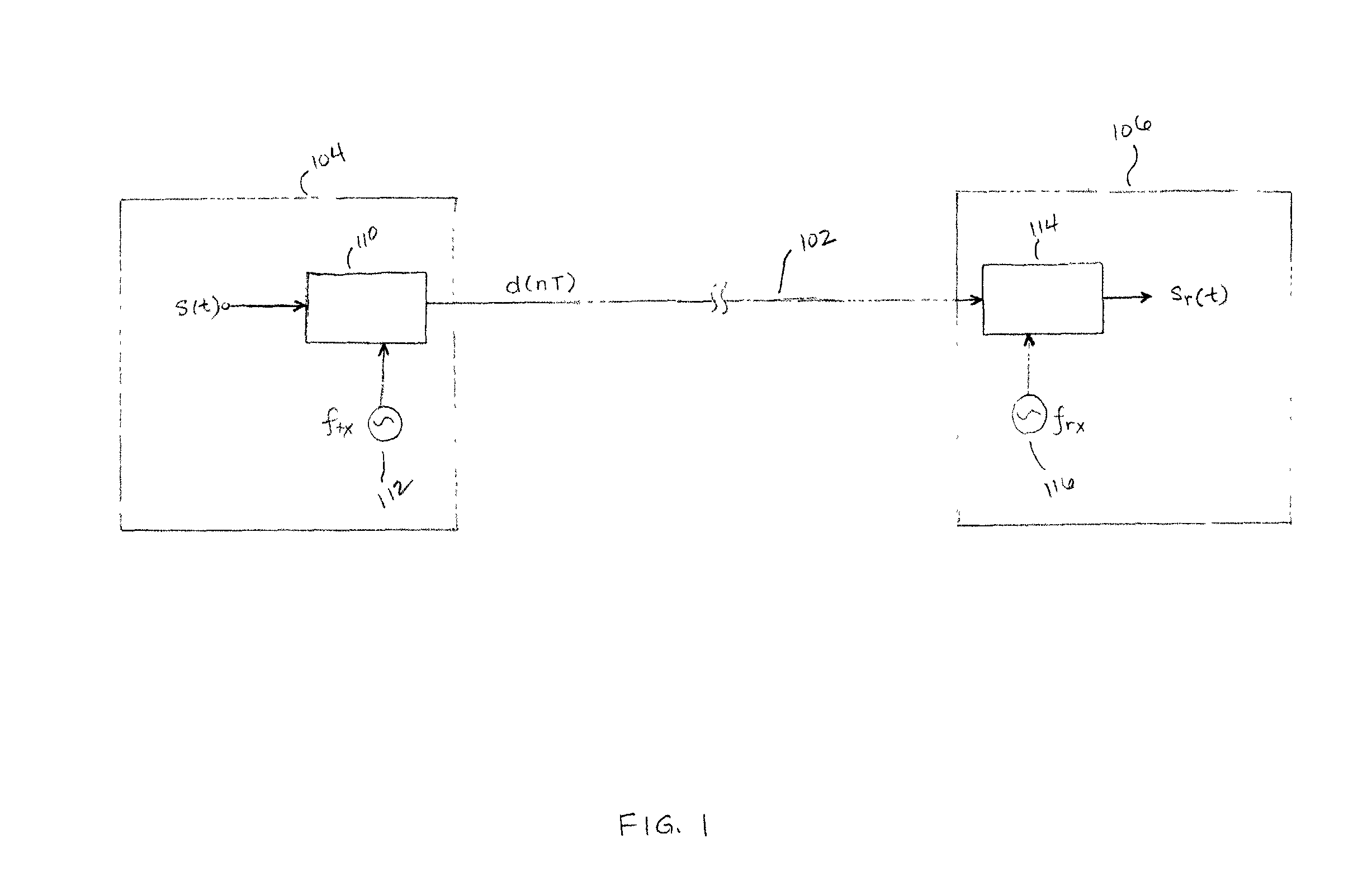Synchronization for digital cable network
- Summary
- Abstract
- Description
- Claims
- Application Information
AI Technical Summary
Problems solved by technology
Method used
Image
Examples
Embodiment Construction
[0046] The present invention involves synchronization or equalization in a digital communication system wherein digital data is sent from an ADC to a DAC which operate at different clock rates. The ADC clock rate determines a data generation rate (i.e., the rate at which digital data is generated). The DAC clock rate determines a data consumption rate (i.e., the rate at which digital data is converted to an analog signal). In one embodiment, the data generation rate and the data consumption rate are equalized by adjusting the clock rates. In another embodiment, the digital data is resampled to compensate for a difference between the data generation rate and the data consumption rate in the digital communication system.
[0047] A digital communication system is illustrated in FIG. 1. The digital communication system includes a transmitter 104 and a receiver 106. Information in the analog domain (e.g., time-continuous signals such as speech, music, video, telemetry data, etc.) are sampl...
PUM
 Login to View More
Login to View More Abstract
Description
Claims
Application Information
 Login to View More
Login to View More - R&D
- Intellectual Property
- Life Sciences
- Materials
- Tech Scout
- Unparalleled Data Quality
- Higher Quality Content
- 60% Fewer Hallucinations
Browse by: Latest US Patents, China's latest patents, Technical Efficacy Thesaurus, Application Domain, Technology Topic, Popular Technical Reports.
© 2025 PatSnap. All rights reserved.Legal|Privacy policy|Modern Slavery Act Transparency Statement|Sitemap|About US| Contact US: help@patsnap.com



